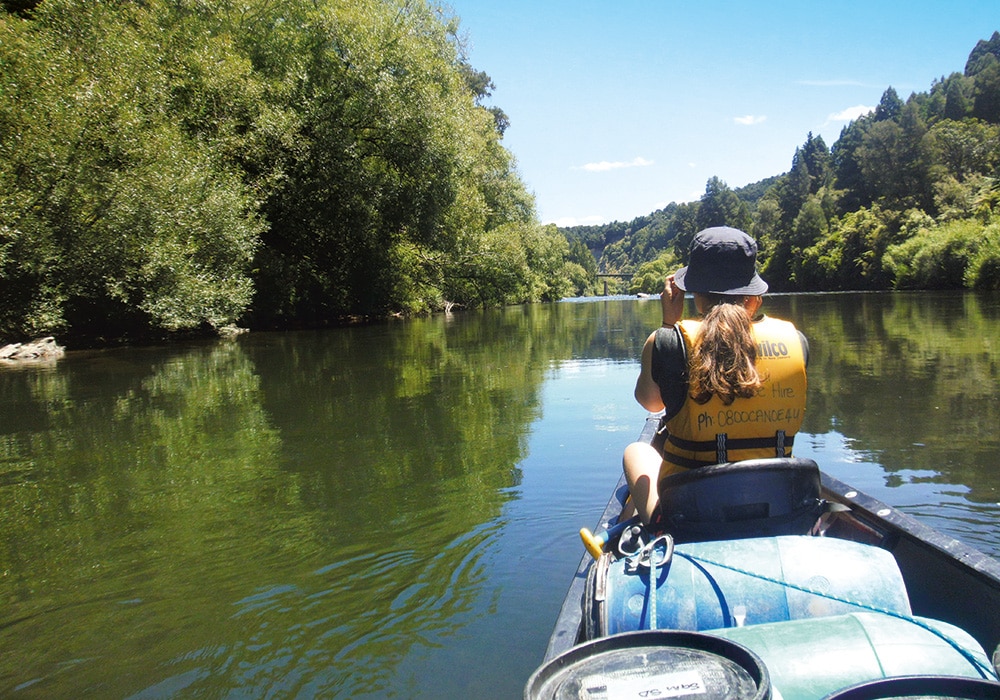Keren Sim got plenty of thrills, a couple of spills and a front-row seat to some of the most remote bush in the country on the Whanganui Journey, a unique adventure unlike any other.
If you had asked me a few years ago whether I would willingly sign up for five days of paddling a fully-laden canoe down the Whanganui River, camping with no hot showers or flushing toilets and battling unpredictable rapids, I would have said you were dreaming. Yet somehow, that’s where I found myself earlier this year, along with my intrepid partner Vince and two equally adventurous friends, as we set out to complete the full 145km version of what is known as the Whanganui Journey.
The Whanganui Journey is the only one of New Zealand’s Great Walks you don’t actually walk. Instead, you canoe, or kayak, past deep valleys and towering cliffs alive with native flora and fauna. It’s not for the faint-hearted; to do this journey requires a good level of fitness, and to be confident paddling a canoe or kayak. But it’s worth it; amongst all the chaos of lashing barrels to our canoes, setting up and packing down tents, and paddling for more consecutive hours straight than I ever have before, we stumbled on something magical – the kind of otherworldly experience you rarely get to enjoy in this modern day and age.
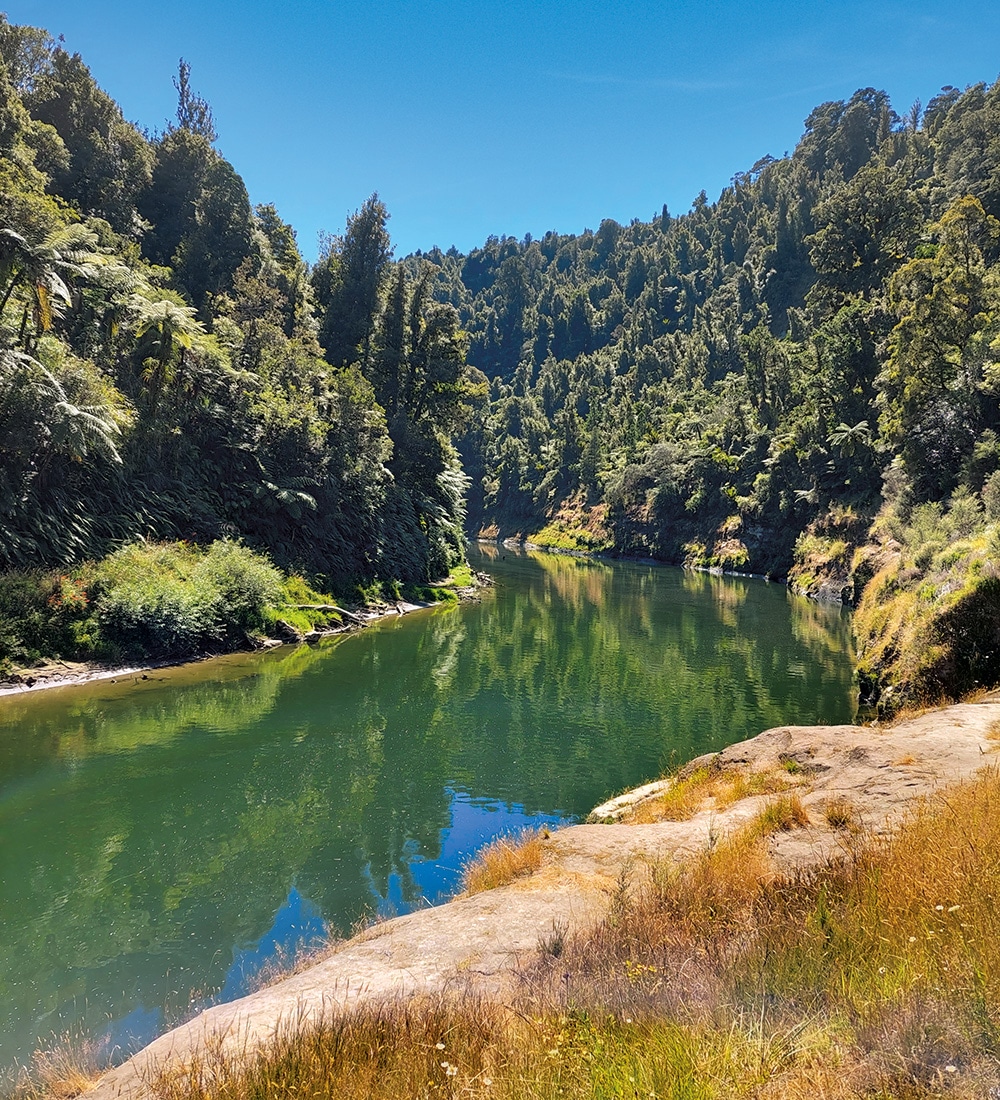
Preparing for the Journey
We began our adventure in Taumarunui, camping for the night at the Taumarunui Canoe Hire company’s base on the banks of the Whanganui River. This family-run business facilitates all the key parts of the experience for you, from the canoes and lifejackets to the pickup at the other end and transport back to Taumarunui. We came prepared with everything on their recommended packing list, which included wet weather gear and extra food, as well as an emergency locator beacon. Before heading to bed for a good night’s sleep, we stuffed our gear into the watertight barrels we were given – two each – ready to pack into our canoes in the morning.
The next day started bright and early with a safety briefing covering all the finer details: the basics of paddling, what to do in an emergency and landmarks to watch out for (crucial, lest you take a wrong turn and accidentally go over a waterfall!). We were doing the independent, unguided experience, so we all paid close attention. The key, we were told, was all in the hips – in choppy waters, sit low in the canoe and rock from side to side, so your canoe goes with the motion of the current, not against it.
Armed with this knowledge, and with the butterflies starting to knock around in my stomach, we were fitted with life jackets and guided down to the river to load up our canoes. A quick practice paddle around the calmer waters by the boat ramp, one final safety check, and that was it – we were off to make our way 22km downstream to the next campsite.
Day 1: Taumarunui to Ohinepane
The first test of our canoeing skills came quickly, just 10 minutes into the trip. An imposing boulder jutted out of the riverbed – and a rapid was pushing us straight for it. Somehow, as we rushed closer, all the information I had just heard flew swiftly out of my head. With my partner frantically shouting directions from the back and the current pushing us inexorably forward, we got our paddling rhythms confused and ended up crashing right into the rock.
Luckily the only thing that was hurt was our pride, but our canoe was now beached against the boulder. We hopped out, dragged the canoe downstream and pushed back in, thankful that we didn’t overturn completely.
With that initial challenge done, we were free to settle in and fully appreciate our surroundings for the first time. The Whanganui Journey takes you deep into the heart of the Whanganui National Park, which boasts wide swathes of lowland forest (one of the largest remaining tracts left in the North Island) and provides a home for a diverse range of birds including brown kiwi, fantails, tūī, and kererū.
As seen from a canoe, it’s a totally transportive experience. Paddling soon becomes automatic, and with nothing to hear but birdsong lilting throughout the valleys and occasional splashes of water, you row happily for hours at a time, drinking in the stunning views. Of course, that’s not to say the journey is easy – after all, you’re covering serious ground.
Our first day was a crash course in what to expect over the rest of the experience. We got used to being drenched with water as we splashed through rapids, using the quieter moments to bail the excess out of our canoe. The starting leg of the journey covers 22km and takes three to five hours to complete. We did it in six, after stopping for a break to visit the beautiful Lauren’s Lavender Farm and café, handily located 15km from Taumarunui. It was a lovely spot to indulge in afternoon tea surrounded by fields of lavender in full, fragrant bloom, and a respite from the hours of paddling.
We reached Ohinepane around 4pm. Then it was time to hustle through essential chores – tying up the canoe, unloading our barrels and hefting them up to the campsite so we could pitch our tents and cook dinner before the sun went down. As the day dissolved into dusk, we treated ourselves to a dip in the river, submerging ourselves in water that was blessedly cool and clear. That evening, tired but happy, we sprawled on the grass, tracing the constellations that spangled the skies above us and debriefing the day’s highs and lows before turning in.
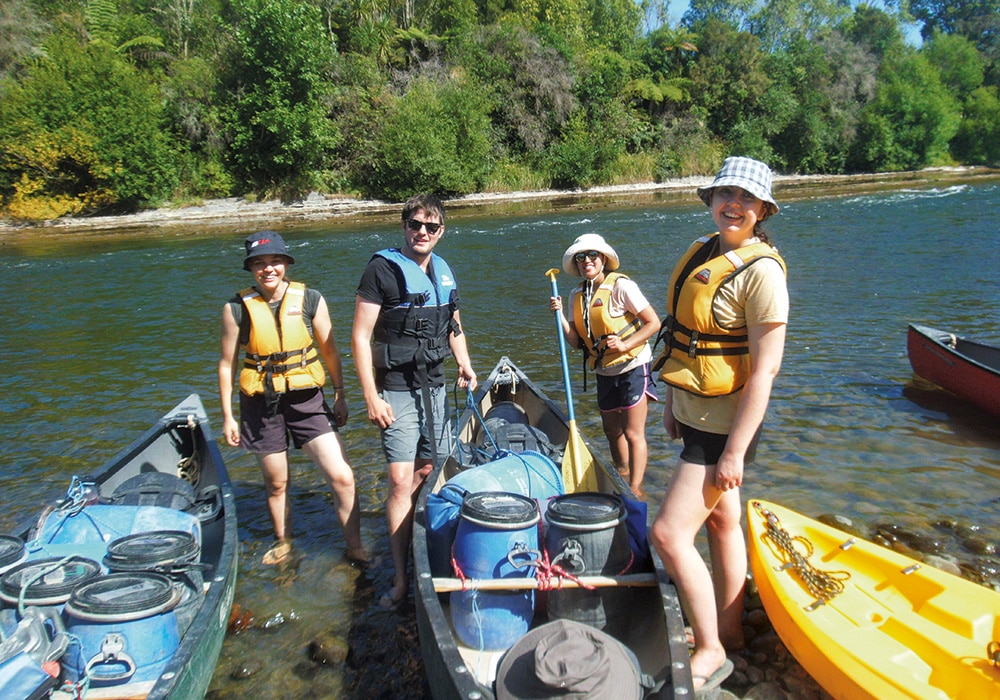

Day 2: Ohinepane to Whakahoro
This was one of the hardest days of the whole journey, and one of the longer distances to cover – six to eight hours of paddling over 35km. My arms were achingly sore after just a few hours, and to make things worse, we’d all woken up late and were almost the last to leave, which left us trailing the rest of the group the whole day.
Still, even with those frustrations, the beauty of our surroundings made us forget about the physical work. This leg of the trip took us into deepening bush, and we watched in awe as farmland gave way to rugged native forest.
Gliding through clouds reflected in the mirror-like expanse of the river, we were flanked on both sides by vertiginous walls of greenery. Kāmahi and tawa trees interlaced to form a vibrant canopy above, while ferns sprouted in the shade underneath their mighty branches, decorating the cliffside with their delicate fronds. At midday we ate lunch at another campsite on the banks of the river, grateful for the chance to rest and stretch our legs as we munched on the veggie and bean wraps we’d prepared earlier that morning.
At day’s end, we moored the canoe and slogged through an uphill climb with our packed barrels to the Whakahoro site. This campground is situated on farmland, so we enjoyed our dinner of nachos and corn with the company of a few curious horses looking on from the paddock next door.
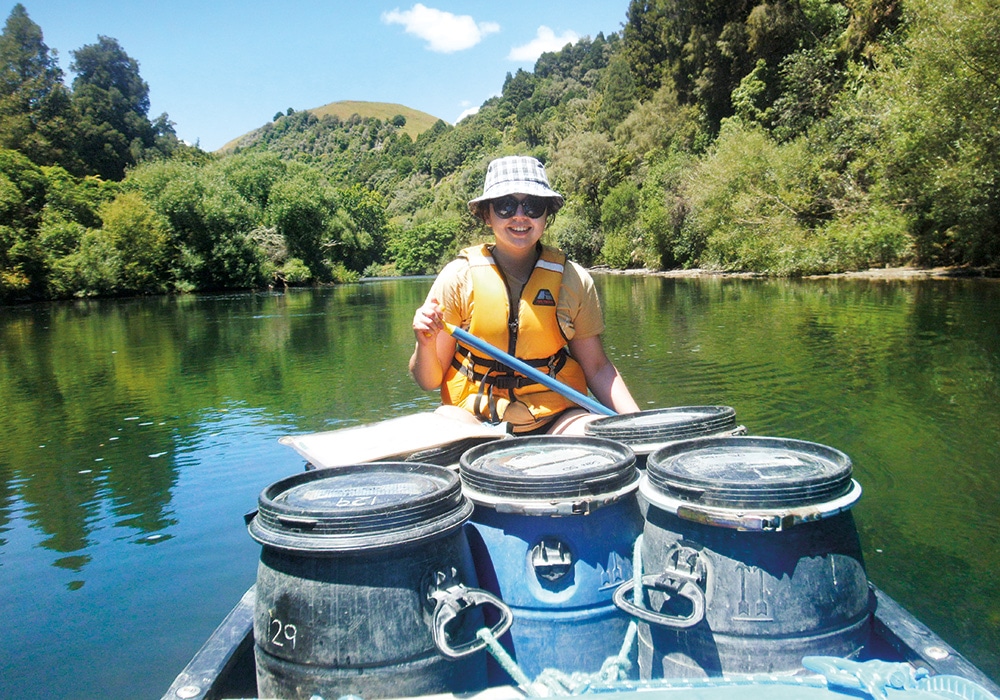
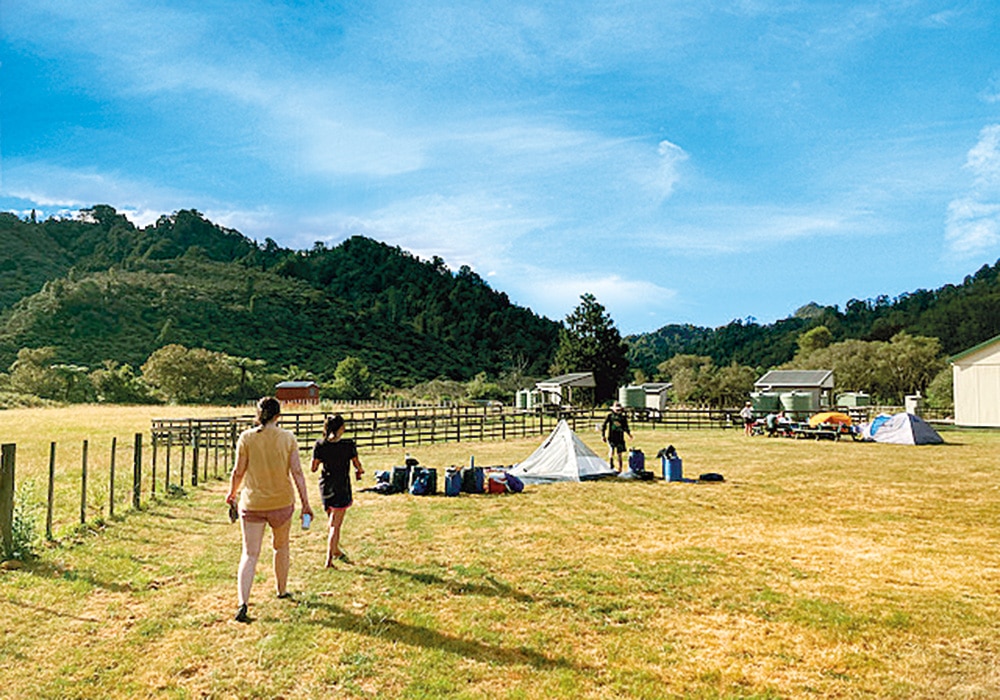
Days 3-4: Whakahoro to John Coull Hut; John Coull Hut to Tīeke Kāinga
The next couple of days took us through ever more remote tracts of dense native forest. The gorge was now dotted with waterfalls and even a few caves. We had made an effort to get on the river early, by about 7 or 8am, and for the first couple of hours, we were rewarded with picturesque stretches of calm water; wisps of early morning fog draped low over the hills and shafts of sunlight filtering through the trees. These were my favourite parts of the journey, when everything was quiet and still, as if we had travelled back in time to explore a forgotten land.
On day four, we stopped at the Mangapurua Landing to do the short bushwalk to the Bridge to Nowhere. This concrete bridge was built in the 1930s to provide road access to the Mangapurua Valley Soldiers Settlement, an area given to returned servicemen from World War One. The intention was to create rich farmland, however, this proved too difficult and the scheme was eventually abandoned. Today only the bridge remains, an impressive feat of engineering hidden in the bush. We reached Tīeke Kāinga, our last campsite, in the early afternoon. We were now well practised at the familiar routine of unpacking barrels and pitching tents, so we got set up in record time and headed to bed early. Day 5: Tīeke Kāinga to Pipiriki The next morning dawned bright and sunny. With an extra spring in our step, we loaded our gear back onto the canoes and pushed off, knowing this would be the last time we’d have to deal with those unwieldy barrels. Each of us had lugged around a 30L barrel (fully watertight) and 60L barrel for the duration of the journey, packed to the brim with all our camping gear and food. The barrels did a good job keeping everything reasonably dry – even if you tipped over – but they weren’t easy to carry, so we looked forward to packing them up for the last time.
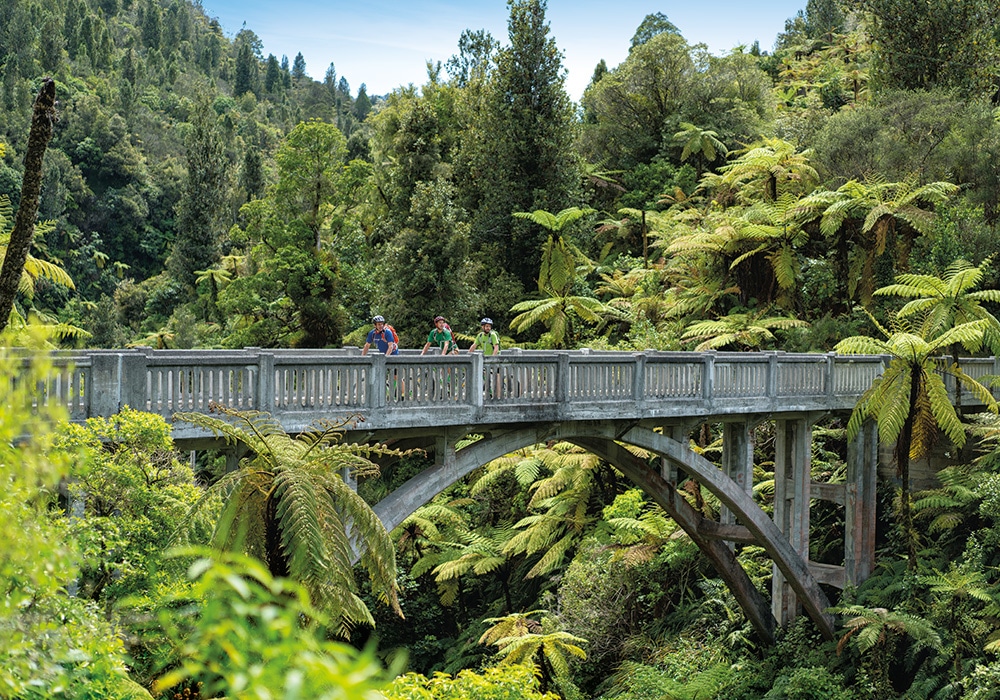
This is the shortest paddling distance of the whole trip, a mere 21.5km to the end of the journey at Pipiriki. Unlike the past few leisurely days however, this action-packed stretch of the river is riddled with multiple rapids. The most notorious is called the ‘50/50’ – so named because you have a 50 per cent chance of getting dumped into the river while going through it! If you’d rather not risk it, you can bypass it by pulling your canoe through a shallow part of the river next to the rapid. This also makes a great spot to stop and cheer on your fellow adventurers who are tackling it head-on. Vince, Catherine and I opted to sit the 50/50 out, but our friend Sam hopped into another couple’s canoe to give it a go. The three of them made it about halfway through before their canoe overturned and everyone fell into the water; luckily there was no harm done!
After five days of travelling the river, we were pretty keen to get back onto dry land and give our arms a break. We still had three to four hours of paddling ahead and we threw ourselves into it with a vengeance, knowing we were nearing the end. When we finally spotted the sign for Pipiriki, Vince and I cheered out loud, and managed to find an extra burst of strength to push through the last few hundred metres to the boat ramp.
A heady mix of relief and pride flooded through me as we got out of the canoe that had been our shared vehicle for the last time. We still had one more night of camping in Taumarunui, but the hard part was over. From the monotony of packing and repacking all of our gear each day, to the physical fatigue of constant paddling, it had been undeniably difficult. But that’s part of what makes this experience so special.
As we piled onto the canoe hire company’s bus to head back to Taumarunui, we reflected on our adventure. While there were plenty of special moments, what made it unforgettable was the sheer, uncomplicated joy of the trip. Just tiring out your body each day, to tumble into a well-earned sleep each night; travelling through some of the most beautiful and remote landscapes in Aotearoa; and unforgettable evenings spent under the glittering radiance of the stars, laughing together about the day’s events – these are the kinds of memories that stay with you for a lifetime.
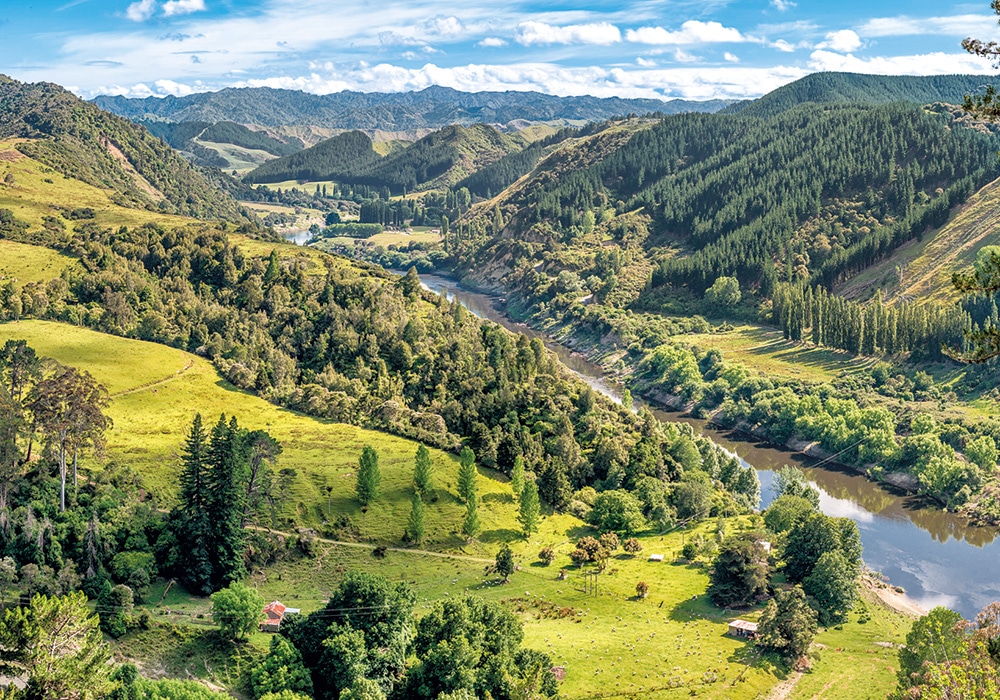
More Information:
The 145km Whanganui Journey from Taumarunui to Pipiriki takes about five days to complete; a shorter 3-day journey from Whakahoro to Pipiriki, that covers 88km over three days, starting midway from the Whakahoro campsite, is also possible.
Huts and campsites may require booking in advance depending on the time of year. See the DOC website for more information.
There are several specialist operators providing guided and unguided tours. We used Taumarunui Canoe & Jet Tours
Other providers:
- Whanganui River Canoes whanganuirivercanoes.co.nz/
- Canoe Safaris canoesafaris.co.nz/whanganui-river
To do the Whanganui Journey safely without a guide, DOC recommends you should:
- be a confident swimmer
- have experience in a canoe
- be fit enough to paddle for 6 to 7 hours in a day
- be over the age of 10
- have at least two people in your group, plus enough adults to supervise any children and teens in case of emergency
Taumarunui Holiday Park offers powered and non-powered sites.

